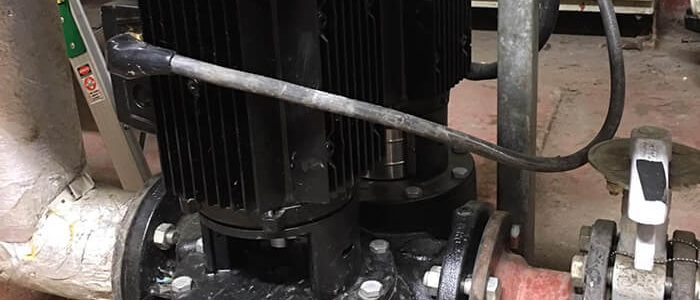Why do pump motor fail?
There is a lot of debate about whether it is better to repair or replace a failed pump motor. A far better option is to ensure your pump motor fail doesn’t happen in the first place. In theory, a motor could run for as long as 50 years, well beyond the retirement date of the connected machine. This can be achieved with regular preventive maintenance targeting the most common points of failure.
Article Chapters
Keep your eye on the ball
Some 51 per cent of motor failures are down to bearings, with incorrect lubrication accounting for around 80 per cent of these. Problems can arise from using too much, too little or the wrong type of lubricant.
On average, re-greasable bearings need servicing every 2,000 hours. But don’t over-grease, because this can overheat bearings and lead to failure. It is important to use the manufacturer’s specification to lubricate the bearings, taking into account how the motor is mounted, its speed and the type of bearings installed.
Don’t let your pump motor catch a fever and fail
Overheating is another common cause of premature motor failure. Heat comes from many sources – the loading on the motor, the ambient temperature, mechanical stress and even the thickness of the paint. Any of these can cause the motor’s insulation to break down, putting the motor under stress and causing it to fail. Check the motor’s insulation class to ensure the designed temperature rise is not being exceeded.
The running time and load on the drive-end shaft also need to be considered. Motors that run continuously need to be fitted with bearings able to cope with high operating hours, and will have to be re-lubricated in line with the manufacturer’s recommendations.
High load on the drive-end shaft can also put unnecessary stresses through the shaft bearings, which can cause excessive friction and eventual overheating to the point of failure. Overheating can also contribute to winding failures. Increasing the running temperature by just 15°C can halve the lifetime of the winding.
Protect against external factors
External factors account for 16 per cent of failures. If it is not feasible to move the motor, then it must be protected. High humidity can allow moisture to enter the motor, causing damage and corrosion. However, users can combat this problem with measures such as opening the drain hole and using enhanced paint systems.
Where motors are operating in harsh outdoor conditions, consider the effects of cold as well as heat. For example, condensation heaters should be fitted to motors used outdoors in cold winter months to minimise condensation.
Finally, ingress of foreign particles into the enclosure can cause damage – particularly to the bearings or windings – so it is important to use the correct IP ratings to protect your motor.
Source of this article: www.wwtonline.co.uk
To find out more ways to prevent motor failure,
send us email at: info@www.kdpumps.co.uk or give us a call: 08000 548 548
www.kdpumps.co.uk


Comments are closed.